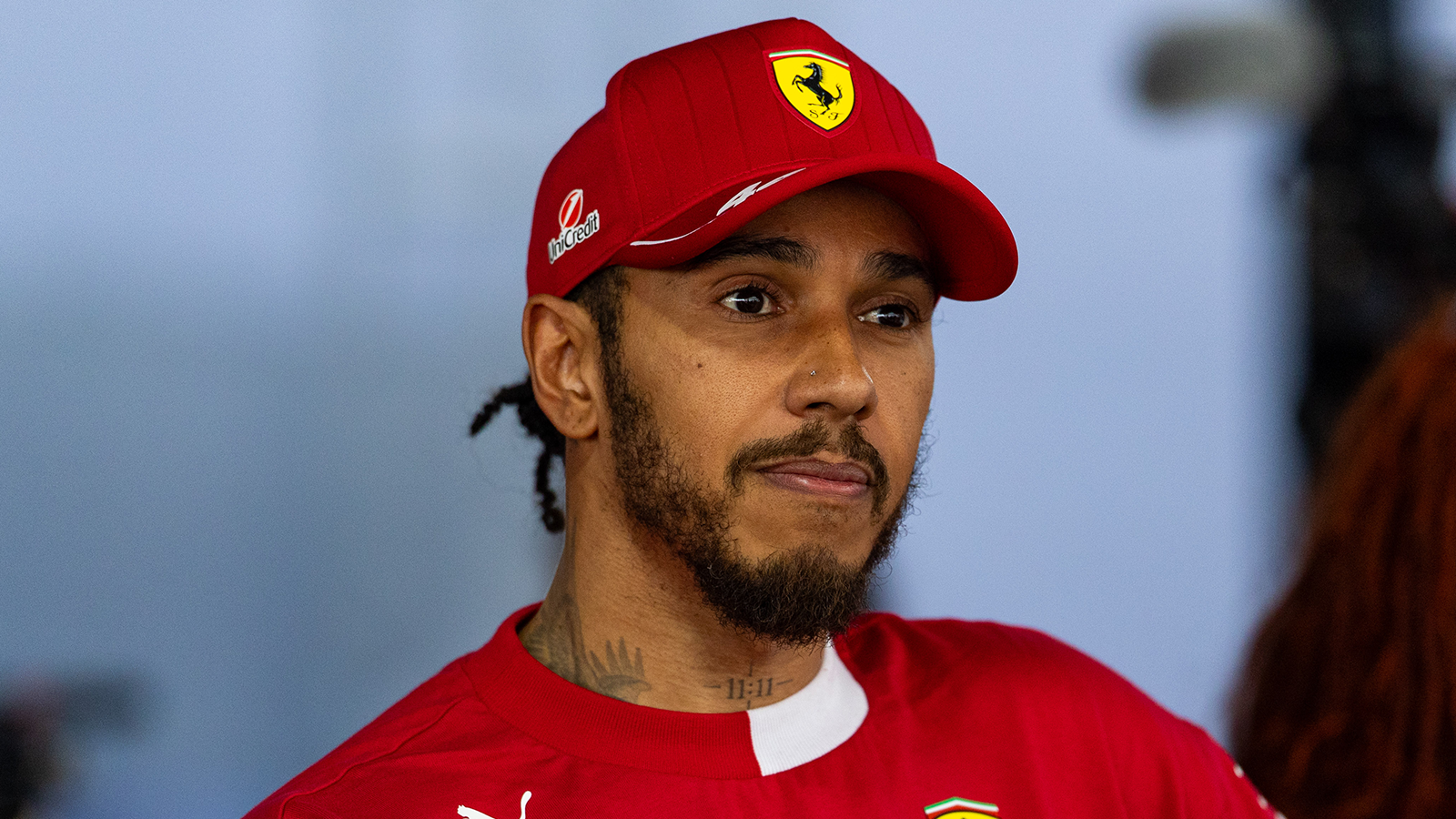In the supercharged, high-stakes theater of Formula 1, a single decision can change everything. It can turn triumph into ashes, celebration into fury, and, in the most damaging cases, trust into cynical disbelief. What happened at the Mexico Grand Prix was not just a racing incident; it was an explosion.
A 10-second penalty handed to seven-time world champion Lewis Hamilton has done more than just rob him of a hard-earned podium—it has ripped open old wounds and ignited a firestorm of controversy that now threatens the very credibility of the sport’s governing body, the FIA.
The incident itself unfolded in a matter of heart-stopping seconds. On lap six, Hamilton, piloting his scarlet Ferrari SF25, was in a fierce battle, defending his third-place position.
As he thundered down the back straight toward turn four, with his perennial rival Max Verstappen looming in his mirrors, Hamilton braked hard. In a fractional misjudgment at the absolute limit, his brakes locked, and the car slid wide, forcing him to cut the track. He rejoined, crucially, still ahead of the Red Bull, which had to tap its brakes to avoid contact.
It was a moment of high drama, the kind of wheel-to-wheel, on-the-edge action that fans live for. In the immediate aftermath, it looked like a typical racing maneuver—a driver pushing too hard, making a small error, and rectifying it to avoid a crash. But the stewards saw it differently.

Minutes later, the notification flashed across the screens: a 10-second time penalty for Lewis Hamilton for “gaining a lasting advantage.”
The impact was immediate and devastating. In a sport where races are won by thousandths of a second, a 10-second penalty is a death sentence. Hamilton, who had fought tooth and nail to put his Ferrari on the podium, was unceremoniously dropped to eighth place. The work of an entire weekend, the effort of hundreds of engineers and mechanics, was undone in a single, brutal stroke.
But this story isn’t about the lost points. It’s about the perceived injustice. As the race unfolded, the question hanging heavy in the paddock and echoing across social media was one of glaring inconsistency. Why Hamilton?
That weekend, multiple other drivers, including Verstappen and Hamilton’s own teammate, Charles Leclerc, were seen in similar, if not more egregious, track-cutting incidents. They ran wide, left the track, and rejoined, often without losing positions. The result for them? Nothing. No investigation, no penalty, not even a warning. The deafening silence from race control in those instances made the gavel fall all the more heavily on Hamilton.
The silence on Hamilton’s radio after the sanction was announced was profound. There was no defense from Ferrari, no argument. There was nothing to say. The judgment was final. But when Hamilton emerged from his car, his helmet still on, his gaze lost in the cacophony of the paddock, his body language spoke volumes. The storm was here.
Walking slowly but with a hardened resolve toward the media pen, his face was a mask of disappointment, fatigue, and simmering rage. When the inevitable question came, he did not hold back. He dropped a bombshell.
“It’s crazy,” Hamilton stated, his voice tight with controlled fury. “Others cut and there was no penalty. I feel very disappointed by the governing body. It’s double standards, as you can tell… and that’s just how it is.”

That last phrase—”and that’s just how it is”—was not a sigh of resignation. It was an accusation. It was a public declaration of no confidence from one of the sport’s most decorated legends, a man who has largely avoided public wars with the authorities. He wasn’t just complaining about a call; he was alleging a systemic, repeated bias.
The FIA, reeling from the criticism, attempted to justify its decision. In a baffling clarification, they claimed Hamilton had gained a “lasting advantage.” Yet, in the same breath, they admitted that the British driver had not violated the official rejoining route prescribed by the race director, stating his speed made it impossible to follow that specific path without endangering himself or others. The core of the penalty, it seemed, was his failure to return the position to Verstappen.
This is where the justification crumbles. At no point, according to team communications, was Hamilton or Ferrari ordered by race control to give the place back. He was never notified that the incident was even under investigation until it was too late. He was trapped in an ambiguous gray area, punished for a rule he was never given the chance to comply with.
This lack of clarity, this ambiguity, is what made Hamilton explode. It fed the narrative that his maneuver was being judged by a different, harsher yardstick than everyone else’s.
He was not alone in his frustration. Across the sporting world, analysts and former drivers voiced their support. Commentator Martin Brundle questioned the consistency of the stewards, while analyst Karun Chandhok pointed out that in previous years, similar offenses would have drawn a 5-second penalty at most. The 10-second ruling was seen as disproportionate and punitive. On social media, the hashtag #JusticeForHamilton erupted, becoming a global trend as thousands of fans accused the FIA of blatant inconsistency.
The consequences of this single decision ripple far beyond the Mexico City podium. On a technical level, it has blown the “lasting advantage” rule wide open. What defines “lasting”? How is it measured? Meters? Seconds? The FIA’s failure to provide public telemetry data or comparative analysis with the other unpunished incidents only fuels suspicion. It creates a dangerous precedent where drivers are left to guess the rules, and in a sport that moves at 200 mph, doubt is lethal.
Politically, the incident has driven a wedge between Ferrari and the FIA. Internally, the mood at Maranello is one of pure annoyance. The team finally has a competitive car, a machine capable of fighting for wins, and they see their monumental effort unraveled by a questionable interpretation. When Ferrari, the heart and soul of Formula 1, feels the system is working against it, the entire sport trembles.

Most damaging of all, however, are the moral consequences. This incident has shaken the public’s perception of the championship’s integrity. Formula 1 is a global narrative, a drama of heroes and villains. When the script feels manipulated, when the referees seem biased, the viewer loses faith. This is precisely what’s at stake.
This is not a new feeling. The shadow of Abu Dhabi 2021, where last-minute decisions controversially defined a world championship, still looms large. The Mexico 2025 case feels like a painful echo of that same pattern: questionable decisions, a lack of transparency, and disproportionate consequences.
When a driver of Lewis Hamilton’s caliber—a seven-time champion, a global icon—publicly states that he can no longer trust the system, what message does that send to the rest of the grid? What hope does a young driver in a midfield car have? What, ultimately, is the point of competing if the rules don’t apply equally to everyone?
This is more than a post-race complaint. It’s an alarm bell. Hamilton’s words were a warning that the very legitimacy of the sport is in danger. What happened in Mexico was not an anecdote. It is an open wound. And as long as the FIA fails to address this crisis of confidence with a thorough, transparent review of its disciplinary processes, that wound will continue to fester, infecting the season, the drivers’ trust, and the credibility of the sport we love.